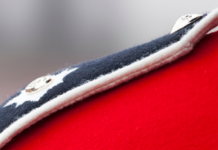Getting started raising poultry is both exciting and rewarding in many ways. If you’re a hobby farmer or a beginner, an important key to health and growth is making sure they’re being raised in the ideal conditions. This article will dive into the essentials of poultry brooders and heating plates as well as the importance of proper nutrition, including vitamins and minerals, and how they play a part in you raising healthy baby chicks.
Creating a Safe and Warm Environment: Chick Brooders or Heating Plates
A brooder is an enclosed space that can be heated to provide a ‘safe space’ for chicks, who can stay warm in it until they grow feathers and no longer need such a carefully controlled artificial environment. In the first weeks of their lives, chicks are highly vulnerable and sensitive to things that can interfere with their normal functions: a well designed brooder is made to keep them snug, dry and protected from drafts.
When you set up the brooder, consider using high-quality materials so that it’s durable, actually holds temperature and has easy access to maintain and clean. Those are key to preventing disease. The same thing is true of ventilation.
For those looking for reliable options, Hatching Time chick brooders cater to the needs of both small-scale and large-scale poultry keepers. These stackable brooders are designed to provide a controlled environment for your chicks. Notably, Hatching Time brooders come equipped with built-in space heaters on each level, ensuring that the chicks receive consistent warmth throughout the brooding period.
Heating plates are a newer option for a brooder setup. Heating plates are used inside a tub, bin, or enclosure to create a warm space that mimics the natural warmth provided by a mother hen, promoting better sleep and natural behaviors in chicks. Adjustable heating plates for chicks also offer great advantages such as:
- Safety: Heating plates significantly reduce the risk of fire hazards compared to heat lamps. They provide a safe and consistent heat source that chicks can snuggle under.
- Energy Efficiency: Powered by an electric heating system, the plates are energy-efficient reducing the electricity, yet not reducing the warmth that’s created for the chicks, meaning that the system remains efficient.Available as different sizes to suit varying brooder sizes.
- Adjustable Height: Heating plates are designed to be adjustable, depending on the different growth stages of the growing chicks, so that at all stages the chicks are maintained at a comfortable distance from the heat.
Check out these heating plates from Hatching Time that are safe, energy efficient and will provide consistent heat for your chicks within your chosen brooder set up.
Essential Nutrition: Food, Vitamins, and Minerals
Proper nutrition is necessary for a healthy chick, and helps support healthy growth. This growth is essential because growing baby chicks are especially prone to disease, so strong nutrition helps to develop a fully functional immune system, giving the young birds the best possible start. There are several aspects of chick nutrition worth highlighting.
- Starter Feed: Use a high-quality starter feed made for chicks with a good balance of protein, fats and carbohydrates. Starter feed needs to have at least 18-20% protein content to promote fast growth. High-quality starter feeds also contain natural amino acids which promote healthy growth in muscle development.
- Fresh, Clean Water: Chicks should have free access to fresh, clean water at all times Ensure the chicks receive plenty of water, by keeping the correct watering system, this ensures they receive their required amount of water for optimal health.
- Grit: When chicks begin eating more solid foods, providing grit helps them break down the food in their gizzard. Providing grit is especially important when introducing your chicks to grains and other new solid foods.
While dietary balance is crucial, some vitamins and minerals are especially important in chick development and long-term health. Here are a few of them:
- Vitamin A: Vitamin A is great for developing healthy skin and mucous membranes. It also supports eye health and a deficiency can lead to poor eyesight, being vulnerable to infections and poor skin health.
- Vitamin D: Normal bone growth and optimal calcium absorption is boosted with a Vitamin D supplement. Vitamin D deficiencies can also result in rickets in chicks. Exposing the chick to more sunlight will increase Vitamin D production in the chick, but supplementary Vitamin D is usually given too.
- Vitamin E: As an antioxidant, vitamin E protects against cellular damage. It also stimulates the growth of the chick’s immune system and aids in muscle growth and development. Deficiency leads to depressed muscle development and weakened or suppressed immune reaction.
- Calcium and Phosphorus: The developing bones of the chicks need calcium, and while they do have traces of it from their eggs, they need more. Add a small amount of phosphorus to their meals to support this mineral. Start early so that they can grow strong bones that will support egg formation later in life.
- Iron: Iron is used by red blood cells to pass oxygen throughout the body. If there’s not enough iron, chicks can become anemic. This will slow their growth and development. Making sure there’s enough iron in a chick’s diet will give the bird a healthy circulatory system so that oxygen is transported properly to the body.
Simply feeding a diet rich in such vitamins and minerals will help you produce very healthy chickens who thrive and reach their full potential.
Best Practices for Raising Chicks
Here are a few more best practices to follow to ensure your chicks will grow into happy backyard birds:
Monitor Health: Always check your chickens often for illness or distress. Behavioral signs can include lethargy, tossed or messy feathers, or unusual poop. Again, looking for things early can be key to preventing disease, and help you keep a healthy, happy flock.
Keep it Clean: Maintain the cleanliness of your brooder and keep it dry. Always remove the wet bedding and waste daily as retention of moisture inside the brooder promotes the growth of fungi and bacteria which might cause respiratory infections in the chicks and other health problems.
Slow Temperature Adjustment: When they get more feathers, adjust your thermometer settings closer to ambient temperatures. Try 5°F (2.8°C) per week as a good rule of thumb.
Socialization: Allow chicks to interact with one another to develop good social behaviors. Socialization is important to reduce stress and for healthy development.
If you want to raise the healthiest and happiest chicks ever, you must start with giving them the correct environment and nutrition. Buy a good quality chicken brooder with a heat lamp or heating plates (safe heating plates in a chicken brooder setup). Above all, give them nutritious food and vitamins and mineral supplements to actively make them as healthy as they can be.
Happy chick raising!




